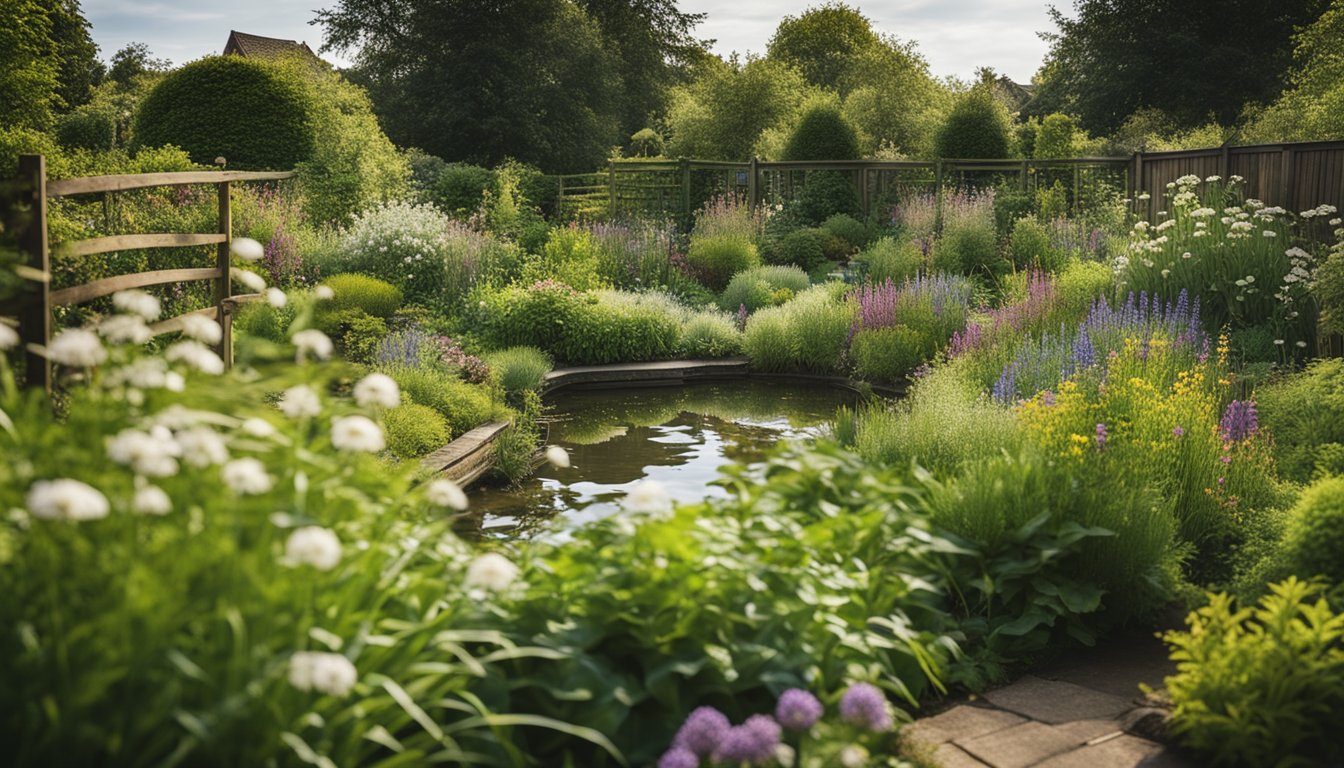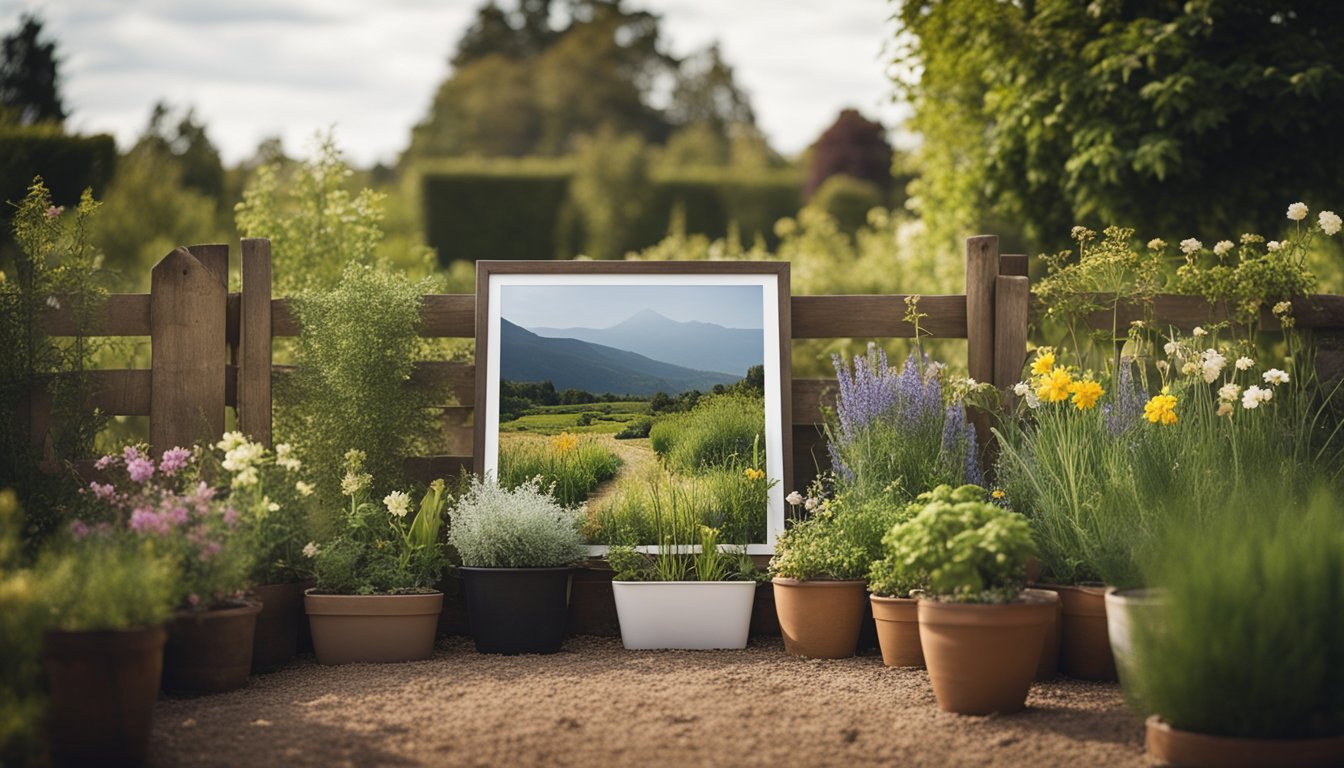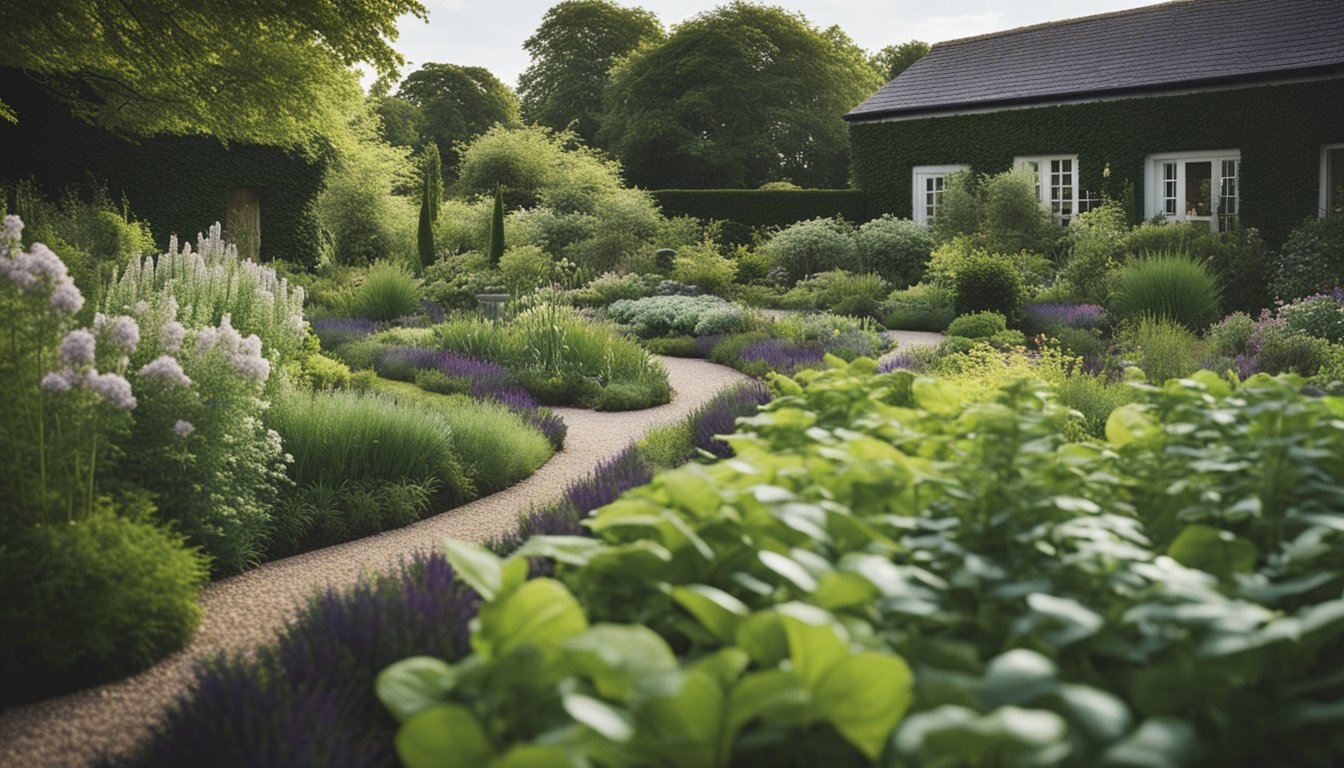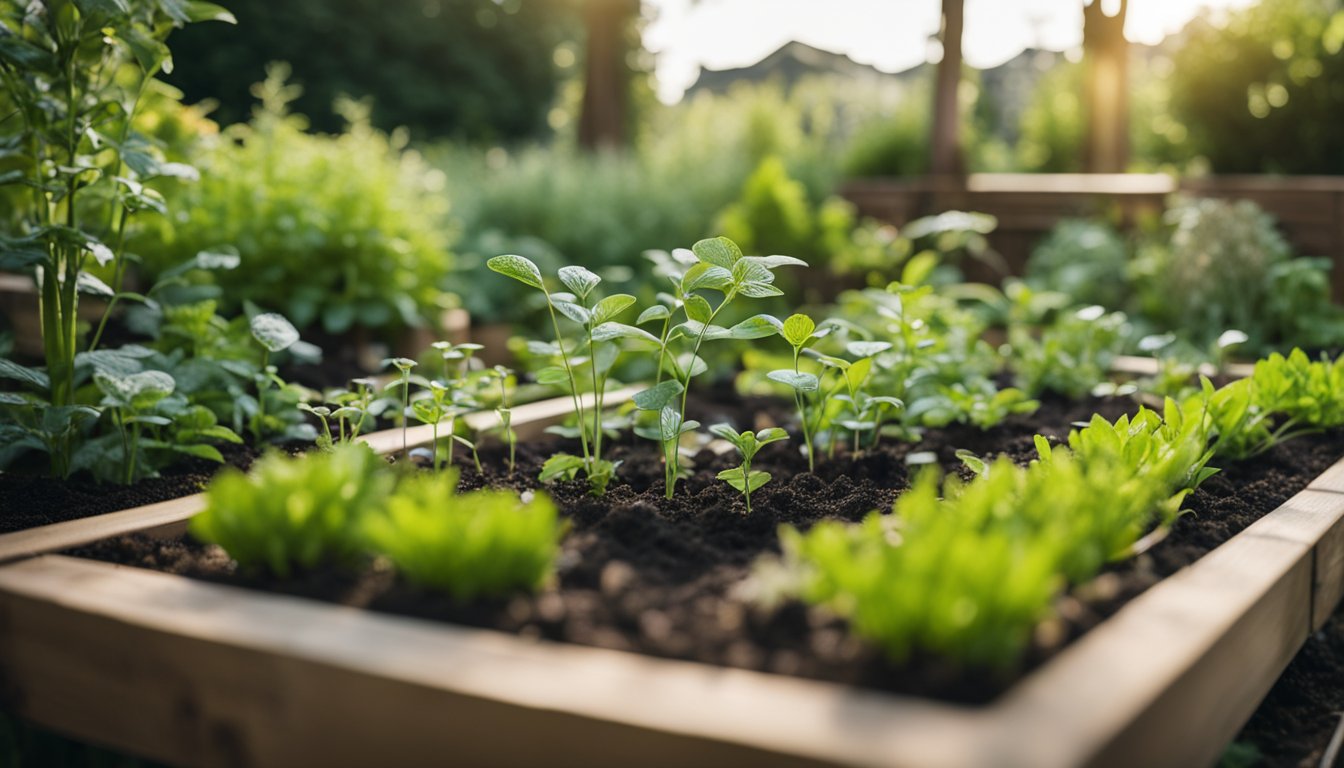Late updated: 12 Sep 2024 12:09
Written by: Emily Thornton
How To Start A Native UK Garden From Scratch: A Step-by-Step Guide
Creating a native UK garden from scratch can be a deeply rewarding experience, allowing us to reconnect with nature right in our backyards. By incorporating native plants, we support local wildlife and create a more resilient ecosystem. Not only that, but native gardens can be lower maintenance and better suited to our climate compared to exotic species.

When starting from scratch, our first step is to prepare the garden space. Removing invasive species and ensuring the soil is right for our chosen plants are crucial steps. Visualise a balanced garden design that includes trees, shrubs, and flowering plants. This variety provides year-round interest and a range of habitats for different species.
Next, we carefully select and plant native species. Silver birch, holly, and guelder rose are excellent choices to start with, providing shelter and shade. We also want to consider ground cover and climbers to maximise our three-dimensional space. With patience and thoughtful planning, our garden will soon become a thriving sanctuary.
Key Takeaways
- Native plants support local wildlife and create resilient ecosystems.
- Preparing the garden space involves removing invasive species and ensuring suitable soil.
- Selecting a variety of native species provides year-round interest and habitats.
Preparing Your Garden Space

We need to evaluate the soil and sunlight, carefully choose the planting location, and design a wildlife-friendly layout to create a thriving native UK garden. These steps ensure that your garden flourishes and supports local wildlife.
Evaluating Soil and Sunlight
Understanding the soil type and pH level helps us select appropriate plants. Conduct a soil test to determine whether it's acidic, neutral, or alkaline. Most UK native plants prefer slightly acidic to neutral soil.
Next, observe the sunlight patterns. Does your garden get full sun, partial shade, or full shade? Different plants have varying light needs, and identifying these zones helps in making informed choices.
Monitor soil moisture levels to identify areas that are damp or well-drained. This is crucial for plant health and growth.
By examining soil and sunlight, we can make informed decisions that lead to a thriving garden.
Choosing Your Planting Location
The location of your garden beds influences plant survival and growth. Select areas with fertile soil and ensure they match the sunlight requirements identified earlier. For instance, shade-loving plants should be placed in areas that receive minimal direct sunlight.
Consider the local climate. Coastal locations might differ from inland areas in temperature and humidity. Knowing the climate helps in picking plants that are well-adapted and resilient.
If space is limited, utilise vertical gardening or container planting. These methods allow us to maximise smaller spaces effectively. Positioning your garden in the right location is foundational for a healthy ecosystem.
Creating a Wildlife-Friendly Layout
A garden that attracts and supports local wildlife enhances biodiversity. Group plants with similar water and light needs to streamline care. Use native plants to provide food and shelter for insects, birds, and other local fauna.
Introduce different plant layers—such as ground cover, shrubs, and trees—to create varied habitats. This structure supports a wider range of wildlife.
Adding features like ponds or bird feeders boosts the attractiveness of your garden to wildlife. Maintain soil moisture with organic mulches like shredded leaves, which also enrich the soil.
By creating a thoughtful layout, we foster a vibrant and inviting wildlife garden.
Selecting and Planting Native Species

Choosing the right native species to plant in your UK garden is essential for creating a sustainable and thriving ecosystem. We can enhance our garden's biodiversity by selecting the most suitable plants for different areas.
Trees and Shrubs for Structure
Trees and shrubs provide the backbone of any garden. Native species like the silver birch (Betula pendula) and holly (Ilex aquifolium) not only add height and structure but also offer shelter and food sources to birds and other wildlife.
Silver birch prefers sandy or acidic soils, while holly can grow in various soil conditions. Both thrive in sunlit to partially shaded areas and require minimal maintenance once established.
For shrubs, consider the guelder rose (Viburnum opulus) and hazel (Corylus avellana). These plants offer nectar and berries, supporting bees and birds. Ensure they are planted in well-drained soil with access to sunlight for optimal growth. Regular pruning helps maintain their shape and encourages healthier blooms.
Wildflower Meadows and Lawn Alternatives
Replacing traditional lawns with wildflower meadows is a fantastic way to boost local biodiversity. Native wildflowers like red campion (Silene dioica) and oxeye daisy (Leucanthemum vulgare) attract butterflies, bees, and other beneficial insects.
Wildflower meadows thrive in various soil types, from loamy to sandy soils, and generally prefer sunny locations. These plants are low-maintenance once established, reducing the need for mowing and watering. Annual and perennial wildflowers can be mixed for year-round interest and ecological benefits.
Yellow rattle (Rhinanthus minor) is an excellent addition to any meadow as it parasitizes grasses, reducing their vigour and allowing wildflowers to flourish. Sow wildflower seeds in autumn for the best germination rates.
Ponds and Water Features
Ponds and water features add another dimension to our gardens, supporting amphibians, insects, and birds. Select native aquatic plants like water lilies (Nymphaea alba) and marsh marigolds (Caltha palustris) for their ornamental and ecological value.
Water lilies require deeper water for their roots, while marsh marigolds thrive at the pond's edge. Both plants prefer sunny to partially shaded locations.
Maintaining clean water is crucial; adding oxygenating plants such as hornwort (Ceratophyllum demersum) can help. We should also place rocks and logs around the pond to provide shelter and basking spots for wildlife.
Supporting Wildlife with Plant Choices
Choosing plants that offer shelter and food sources is crucial for supporting local wildlife. Hawthorn (Crataegus monogyna) and rowan (Sorbus aucuparia) are excellent tree choices as their berries are a vital food resource for birds.
In the understorey, wildflowers like purple loosestrife (Lythrum salicaria) and meadowsweet (Filipendula ulmaria) provide nectar for bees and butterflies. Planting a mix of flowering periods ensures a continuous food supply throughout the seasons.
Native plant choices aim to recreate habitats found in the wild, helping sustain populations of insects, birds, and small mammals. Regularly monitor plant health and make necessary adjustments to maintain a balanced, thriving ecosystem.
Frequently Asked Questions

Starting a native garden in the UK involves understanding wildlife needs and selecting appropriate native plants to create a harmonious and sustainable environment. Here, we address common questions to help guide you through the process.
What are the essential steps for creating a wildlife-friendly garden in the UK?
To create a wildlife-friendly garden, begin by researching native plants and their requirements. Next, design your garden with diverse habitats such as meadows, shrubs, and ponds. Provide food, water, and shelter for animals. Avoid chemicals and create spaces for nesting and resting.
Which native plants should be included in a beginner's UK garden for optimal biodiversity?
For optimal biodiversity, include native plants like silver birch, hawthorn, and wildflowers such as oxeye daisy and red campion. Shrubs like holly and guelder rose add variety. These plants support insects, birds, and other wildlife, creating a balanced ecosystem.
How can I design a low maintenance garden that still supports local wildlife?
To design a low maintenance garden, choose hardy native plants that thrive in local conditions, reducing the need for watering and fertilising. Incorporate perennial plants and let areas grow wild. Use mulch to retain moisture and suppress weeds. Installing bird feeders and nest boxes also supports wildlife without demanding constant care.
What considerations are important when planning a wildflower garden specific to UK ecosystems?
Consider soil type and sunlight when selecting wildflower species. Native wildflowers require minimal fertiliser as they thrive in poor soil conditions. Plan for seasonal blooms to provide continuous nourishment for pollinators. Integrate grasses like fescue and bents to stabilise the soil and complement wildflowers.
How can I establish a small space garden that attracts and benefits UK wildlife?
Maximise vertical space with trellises and climbing plants like ivy and honeysuckle. Use containers and hanging baskets to grow a variety of plants. Incorporate a mini pond or birdbath for water sources. Ensure a selection of flowering plants for different seasons to continuously attract pollinators.
What are the best practices for maintaining a garden's appeal to wildlife throughout the changing seasons?
To maintain appeal year-round, plant a mix of evergreen and deciduous species. Provide diverse food sources like berries, seeds, and nectar. Maintain a garden diary to track blooming and fruiting times. Regularly clean and refill bird feeders and water sources. Allow leaves to decompose on site, offering shelter and nutrients.
